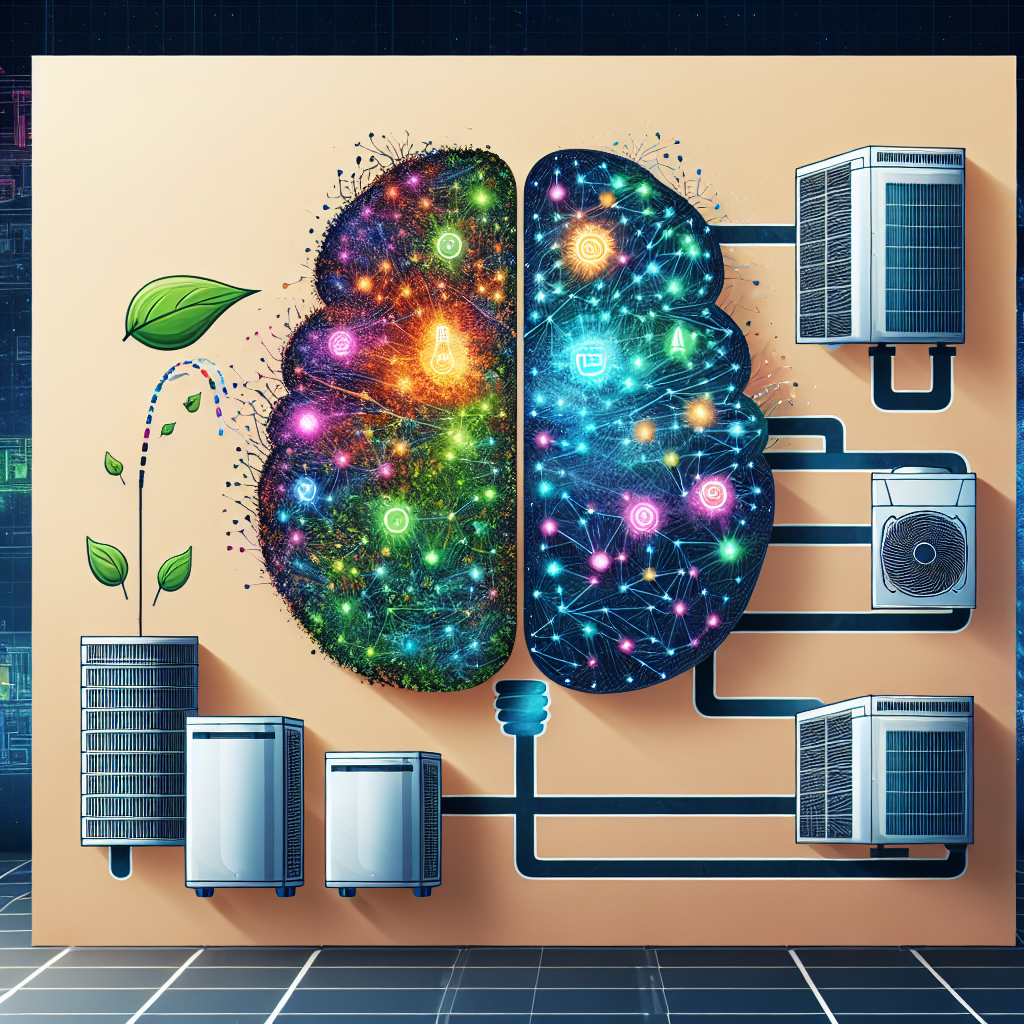In recent years, the increasing focus on sustainability and the transition to renewable energy sources has led to a growing interest in enhancing energy efficiency in heating and cooling systems. Artificial Intelligence (AI) has emerged as a powerful tool that can be leveraged to optimize energy consumption and reduce environmental impact in the heating and cooling sector. AI applications have the potential to revolutionize the way we manage energy in buildings, industrial processes, and transportation, leading to significant energy savings and greenhouse gas emissions reductions.
Renewable heating and cooling systems, such as heat pumps, solar thermal collectors, and biomass boilers, are becoming increasingly popular as alternatives to traditional fossil fuel-based systems. These systems rely on the efficient use of renewable energy sources to provide heating and cooling for buildings, industrial processes, and transportation. However, optimizing the performance of renewable heating and cooling systems can be challenging, as they often rely on variable and intermittent energy sources. AI applications offer a solution to this challenge by providing real-time monitoring and control of these systems, enabling them to adapt to changing conditions and maximize energy efficiency.
One of the key applications of AI in enhancing energy efficiency in renewable heating and cooling systems is predictive maintenance. By analyzing data from sensors and equipment, AI algorithms can detect potential issues before they occur, allowing for proactive maintenance and reducing downtime. This not only improves the reliability of the system but also increases energy efficiency by ensuring that equipment is operating at peak performance. Predictive maintenance can also extend the lifespan of heating and cooling systems, reducing the need for costly repairs or replacements.
Another important application of AI in renewable heating and cooling systems is energy optimization. AI algorithms can analyze data on energy consumption, weather conditions, building occupancy, and other factors to optimize the operation of heating and cooling systems. By adjusting parameters such as temperature setpoints, fan speeds, and flow rates in real-time, AI can ensure that systems operate at maximum efficiency while meeting the heating and cooling demands of the building. This can lead to significant energy savings and reduced operating costs.
AI can also be used to optimize the integration of renewable energy sources into heating and cooling systems. For example, AI algorithms can predict the availability of solar or wind energy and adjust the operation of heat pumps or thermal storage systems accordingly. By optimizing the use of renewable energy sources, AI can reduce the reliance on fossil fuels and decrease greenhouse gas emissions. Additionally, AI can help to balance the supply and demand of energy in a grid-connected system, ensuring that renewable energy is used efficiently and effectively.
In addition to predictive maintenance, energy optimization, and renewable energy integration, AI can also be used for fault detection and diagnostics in heating and cooling systems. By analyzing data from sensors and equipment, AI algorithms can identify faults or inefficiencies in the system and provide recommendations for corrective actions. This can help to prevent system failures, improve performance, and reduce energy consumption.
Overall, AI applications have the potential to revolutionize the way we manage energy in renewable heating and cooling systems, leading to significant improvements in energy efficiency, cost savings, and environmental sustainability. By leveraging the power of AI, we can optimize the operation of heating and cooling systems, reduce energy consumption, and increase the use of renewable energy sources.
FAQs:
Q: How can AI help to improve energy efficiency in heating and cooling systems?
A: AI can help to improve energy efficiency in heating and cooling systems by providing real-time monitoring and control, predictive maintenance, energy optimization, and fault detection and diagnostics. By analyzing data from sensors and equipment, AI algorithms can optimize the operation of heating and cooling systems, reduce energy consumption, and increase the use of renewable energy sources.
Q: What are some examples of AI applications in renewable heating and cooling systems?
A: Some examples of AI applications in renewable heating and cooling systems include predictive maintenance, energy optimization, renewable energy integration, and fault detection and diagnostics. These applications can help to improve the performance, reliability, and efficiency of heating and cooling systems, leading to significant energy savings and environmental benefits.
Q: How can AI be used to optimize the integration of renewable energy sources into heating and cooling systems?
A: AI can be used to optimize the integration of renewable energy sources into heating and cooling systems by predicting the availability of solar or wind energy and adjusting the operation of heat pumps or thermal storage systems accordingly. By optimizing the use of renewable energy sources, AI can reduce the reliance on fossil fuels and decrease greenhouse gas emissions.
Q: What are the benefits of using AI in renewable heating and cooling systems?
A: The benefits of using AI in renewable heating and cooling systems include improved energy efficiency, cost savings, increased use of renewable energy sources, and reduced environmental impact. By leveraging the power of AI, we can optimize the operation of heating and cooling systems, reduce energy consumption, and improve sustainability.

